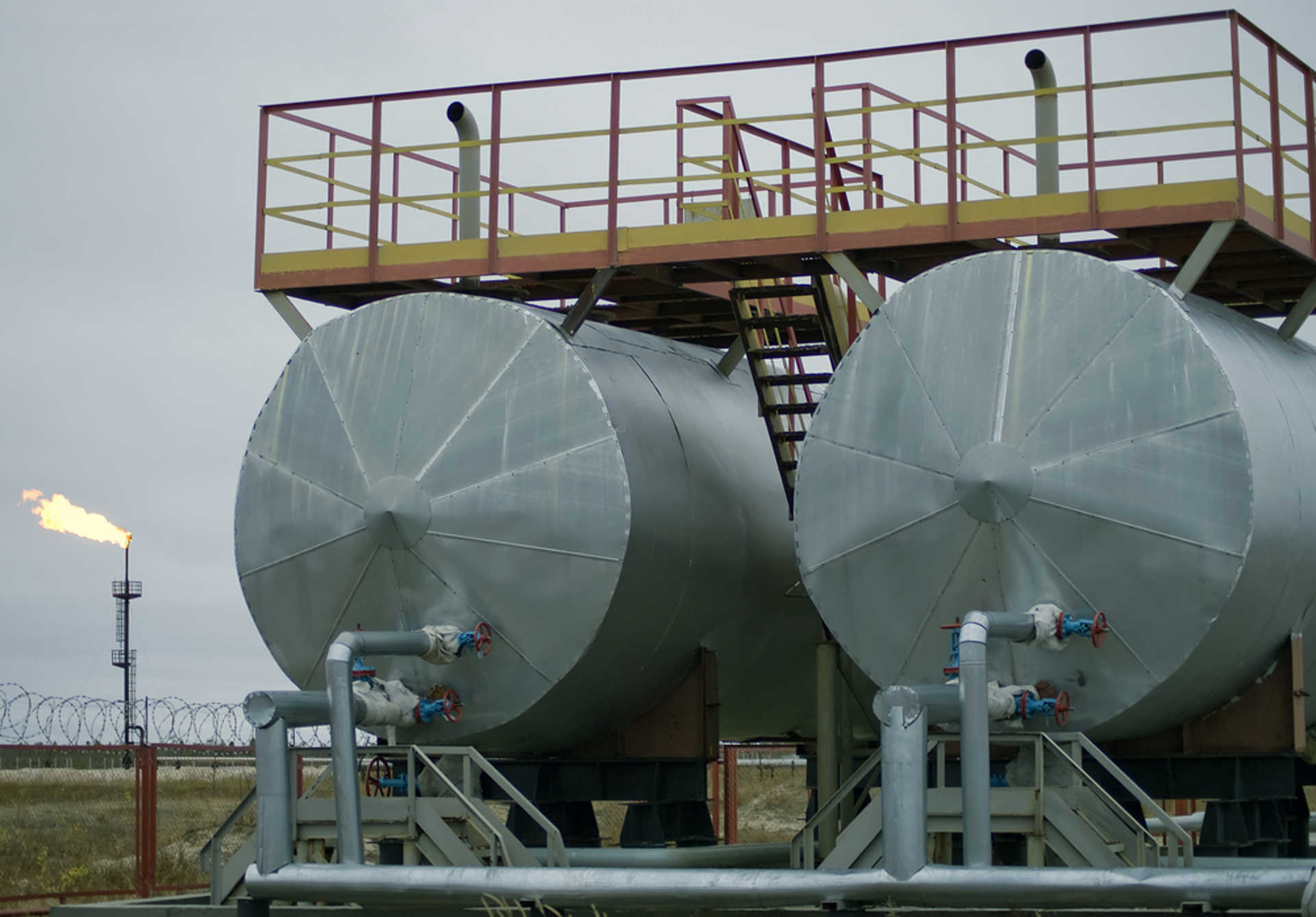Separation of oil, gas and water in static separators or tank farm
The crude oil from the well is usually a mixture of oil, gas and water. To process the oil and its ingredients, these three components are separated in a first step. Depending on whether gas is present in the crude oil or not, a 2- or 3-phase separation is required.
3-phase separation
Wells with a high content of gas have also a high pressure. In the separation plant, this pressure is reduced. This is done in so called high pressure separators, and mid or low pressure separators. This process is a continuous process, where at the front of the separator the liquid/gas is constant added. The gas is released at the top and the oil-water mixture is separating by using gravity and chemicals. The oil water mixture contains as well emulsion, which causes problems in this process as well, but the problem of the emulsion and the solution for it is talked in a separate chapter. As the oil is lighter than water is goes up, whereas the water goes down at the same time. Once the liquid reaches the end of the separator the liquids are leave the oil and water are discharge separately. This process sounds rather easy but is in realty a though job. A lot of chemicals have to be added, sometime heat is introduced in order to speed up the separation and to have the purest possible liquids.
2-phase separation for liquid
A 2-phase separation works as the 3-phase separation, only there is no gas present which has to be removed. Either the 2-phase separation is a continuous process as described above, or it is done batch-wise. In a batch-wise separation the crude is brought in very big tanks where it is stored for a defined time. During this time gravity is separating the oil, the emulsion and the water. Whereas the water which is heaviest is at the bottom, the oil which is lightest is at the top, and in the middle there is found the emulsion, which is a mixture of oil and water, and therefore the weight is in between oil and water.
After some time, normally hours, the crude has separated and is pumped to further processes. The storage time in the tank is known by experience, because the crude will not separate any further, even when stored for a longer time. Here as well the problems are bigger than it looks. The quality of the delivered oil might fluctuate, depending on the situation at the wells. The water content is sometime higher or lower, etc. So a lot of chemicals have to be added in order to speed up the process, but as well to reach a better separation with purer components in a shorter time.
Electrostatic separation
Electrostatic separation is used as well to separate crude with lower percentage of water content. There is inside the separator a mesh of wires where an electrostatic field is introduced to the liquid. This high voltage electrical field is speeding up the separation and is producing purer water and oil. There is a drawback with machines as well. The electrical field has to be adjusted to the quality and the composure of the in coming crude. If the crude is changing fast, there will settle impurities at the mesh and the electrical field collapse. This leads to a shutdown of the process, and cleaning has to be made, before restarting this process. Also a lot of energy is required to sustain the electrical field. And still a lot of chemicals are needed as well in the electrostatic separator.
Merus is able to improve all aspects of the separation
Merus has shown in a lot of these separators, all the targets of the separation are improved. the separation is improved by 10% and more the time of the separation is shortened by up to 50% the purity of the oil and water is higher the chemicals used are optimized. 10 to 30% less are required far less break downs of the electrical field In addition a lot of the separators are at its capacity limit. Having higher water cut in the crude requires more and more liquid to be processed in order to produce the same amount of crude. By speeding up the efficiency as well as the time of the separation, more liquid can pass through these plants. Giving an ROI in this application is very difficult and varies from plant to plant. Considering only the savings of the used chemicals the ROI will be only a few days.

